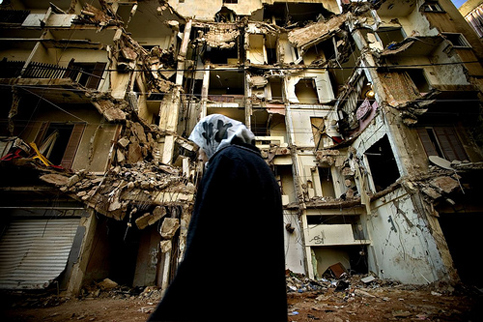Lebanon: Nearly 300 people killed or wounded since 2006
- Daily Star by By Anthony Elghossain. Saturday, April 5th, 2008

BEIRUT: Nearly 300 people have been killed or injured in South Lebanon by unexploded ordnance dropped by Israel just before the cease-fire that halted the 2006 summer war, and more than half of the areas originally contaminated by cluster bomblets have yet to be fully cleared, according to the United Nations Mine Action Coordination Center for Southern Lebanon (MACC).
The results of a new MACC overview of its functions in Lebanon were released to the public Friday in order to mark, in part, International Mine Action Day. MACC field officer Dalia Farran discussed the results of the study, noting that “since the 2006 [summer war] cease-fire, 965 locations contaminated by unexploded ordnances have been identified throughout the 39 million square meters that constitute South Lebanon.”
Some “42 percent of these areas have been completely cleared, and another 47 percent of the surface area in question [South Lebanon] has been at least partially swept” by joint teams consisting of individuals from the Lebanese Army and several international organizations, Farran added.
The MACC figures also state that the combined total for deaths and injuries due to the explosion of cluster bombs and missile fragments number 292, including 27 dead and some 206 wounded civilians (the remainder consist of Lebanese soldiers and members of international organizations).
UN peacekeepers – including explosives experts from the Belgian, Chinese, French, Italian, Korean and Spanish contingents – also took part in the event, touring South Lebanon to increase awareness regarding land mines and cluster bombs.
UNIFIL commander Major General Claudio Graziano explained the importance of awareness, saying that a “single land mine lurking in the backyard … can hold an entire community hostage.”
Unexploded ordnance left over from the Israeli occupation of South Lebanon, as well as from other eras dating back to the French Mandate, represent a significant problem for the Lebanese population.
A source of significant diplomatic tension between the states of Lebanon and Israel is the dispute regarding the precise location of several minefields laid by the Israeli military during the Lebanese Civil War and the occupation that lasted from 1978 until 2000.
Lebanon has requested, to no avail, that Israel give the UN maps delineating the precise location of the thousands of mines that remain in the South. Also adding to diplomatic tensions and the daily threat faced by residents of South Lebanon is the new threat of unexploded cluster bombs, 4.6 million of which were dropped by the Israeli Army during 2006 summer war, with around a million bomblets remaining unexploded.
Cluster bombs are large canisters that contain several smaller “bomblets” that are dispersed as the canister nears the ground. Because of their “wide area of effect” and a tendency of failing to explode, cluster bombs have been opposed by several states and human rights groups.
As international awareness regarding the dangers of cluster bombs continues to rise, talks are under way at a series of international conferences regarding a draft treaty banning the use of these munitions, with a final round of deliberations scheduled in Dublin this May.


